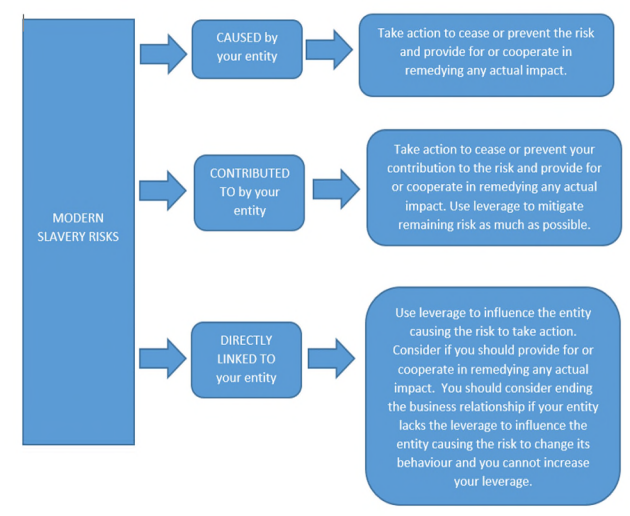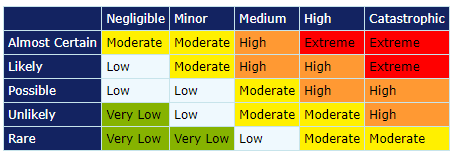| 3. Risks | Describe the risks of modern slavery practices in the operations and supply chains of the reporting entity and any entities it owns or controls | ||||||||||||||||||
| AMSA utilises the Department of Home Affairs ‘Cause, Contribute and Linked Model’ (CCL Model) to limit the risk of modern slavery in our supply chains. Using this model assists AMSA understanding and focus on those items we directly control or contribute to as opposed to those items where we have less control.
|
Risk | Contracts/supplies | Description |
| Very Low |
| AMSA has effectively eliminated the risks associated with these contracts /supplies through various means including:
Note: AMSA is satisfied that through its operation under the maritime Labour Convention and the Fair Work Act that the risk potential to cause, contribute to or be directly linked to modern slavery is very low. |
| Low |
| A low risk exists regarding elements of vessels that AMSA utilises and goods procured overseas (equipment, vessel parts, unique building materials/minerals etc) that may include elements of indentured labour.
|
| Moderate |
| The industry which is used to manufacture computer components has a history or indentured labour and servitude which AMSA is aware of. AMSA has little control over the risk presented by mining supply chains but will look to how it can influence suppliers to reduce the risk over time. |
| High | Nil | NA |
| Extreme | Nil | NA |
It is unlikely that AMSA’s current known and immediate supply chain has risks which meet the threshold for serious exploitation as defined by the Act.
Appendix 1 describes a list of modern slavery indicators which can be used to identify the risks of our major suppliers. They included considering the indicators in the following manners:
- Sector and industry risks
- Product and service
- Geographic risk
- Entity risks
The result of assessing the indicators and applying the CCL model is an internal risk and control table which AMSA will update as it improves its awareness and understanding of the risk of modern slavery.
AMSA acknowledges that:
- visibility of the risks of modern slavery practices in the full downstream supply chains is limited
- modern slavery risks to AMSA will change over time as operational requirements change and our understanding of our supply chains improves
- identified contracts/supply chains include a risk that there may be links to modern slavery further down the supply chain that are outside of AMSA’s control and that are not visible to AMSA.

